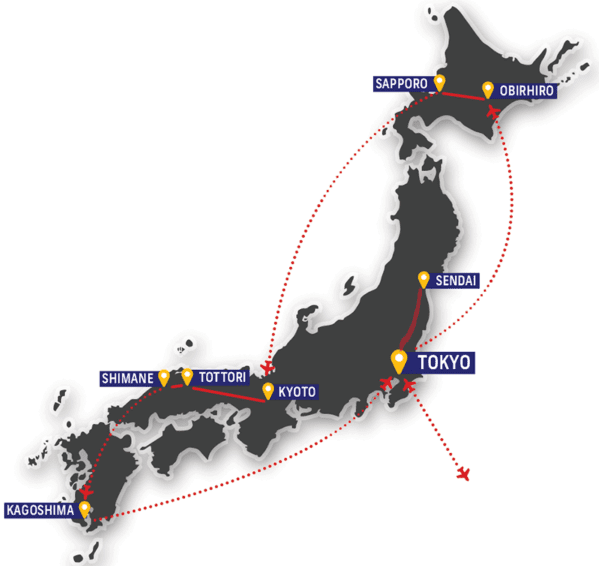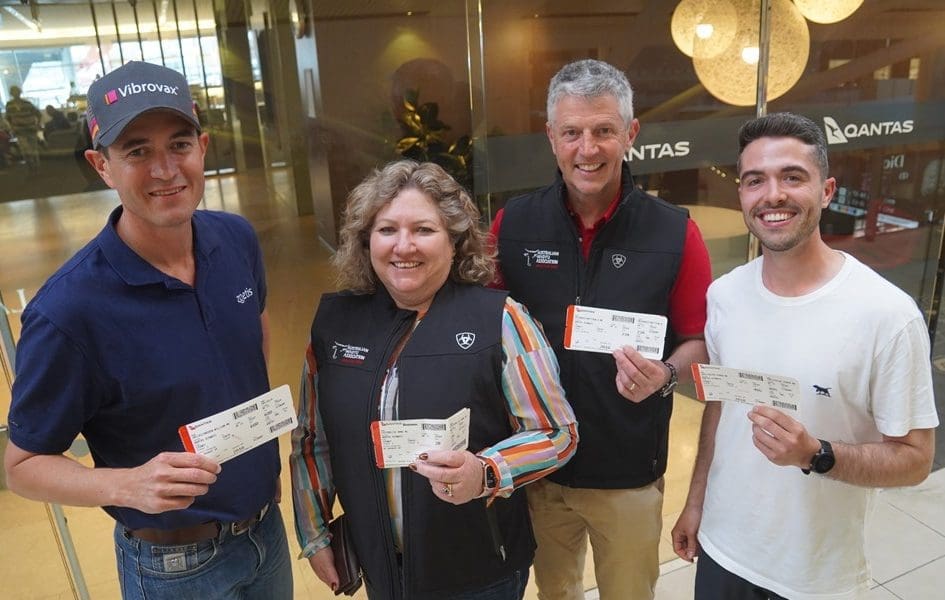
Wagyu tour participants starting to gather at Sydney airport this afternoon, from left, Andrew Hallas, Zoetis Animal Health; Joanne Chiconi, AusGyu, Mitchell, QLD; Matt McDonagh, AWA; and Oscar Saez, Toro Wagyu, Rosewood QLD.
THERE were high spirits and equally high expectations as a group of 40 Wagyu industry stakeholders from across Australia gathered at Sydney airport this afternoon to take part in a fortnight-long tour of Japan’s Wagyu industry.
The information-packed itinerary put together by the Australian Wagyu Association will include visits with prominent Japanese Wagyu cattle breeders, feedlots feeding both Australian and Japanese-bred Wagyu cattle, meat research institutions and other destinations of interest.
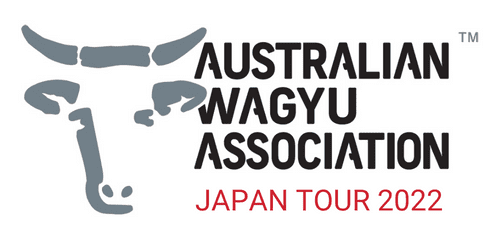
The program will culminate with a visit to Japan’s famed Zenkyo – the National Wagyu Cattle and Carcase Show – an event full of colour, pomp and ceremony, which is held only every five years.
This year’s event is being staged near Kagoshima, in Japan’s deep south, in a region famed for its Wagyu beef production.
Part Wagyu stud cattle competition, part genetics showcase, part food festival and trade show, Zenkyo attracts large crowds of people from across Japan’s 46 prefectures, together with growing contingents of visitors from overseas.
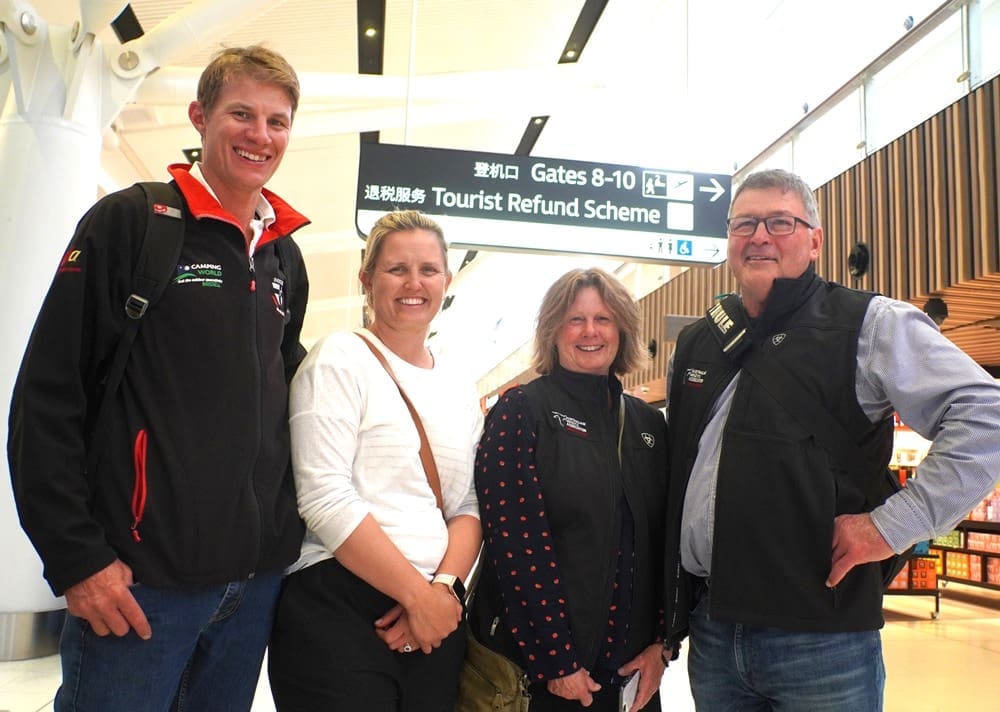
Peter and Meryl Trotter, Letterewe Wagyu,Wauchope NSW right, with Johnno and Robyn Elphick, Sunnyside Wagyu, Inverell, NSW getting ready to board their flight for Tokyo
AWA chief executive Matt McDonagh said this month’s tour would provide an important benchmarking opportunity for Australian Wagyu, since the last tour was undertaken back in in 2017.
As the map published here shows, the Australian tour group’s itinerary starting tomorrow will span the entire nation, from the island of Hokkaido in the far north, to farms and feedlots around Sendai, Osaka, Kobe, Tottori and Shimane, before the Zenkyo event near Kagoshima in the deep south.
While most of this year’s tour group is made up of Australian Wagyu cattle breeders, feedlot operators, supply chain managers and industry service providers, it also includes small contingents from Brazil, the United States and Austria.
Matt McDonagh said the international contingent on the tour reflected the fact that the Australian Wagyu Association now had more than 300 international members on its books.
“Everybody involved has high expectations for the tour,” he said.
Breeding evolution – in Australia, and Japan
“Going back five years when the previous tour was held, the Japanese Wagyu production system was undergoing some significant change. This time around, we’d expect to see the evidence of evolution of Japanese Wagyu production systems and targets.”
“On the 2017 Wagyu tour, some in the Japanese industry were talking about targeting a Japanese A3 grade carcase, rather than necessarily aiming for the pinnacle – A5.”
“Their thinking was that this would potentially be more cost effective to produce.”
One of the clear messages five years ago was the enormous cost of production faced by Japanese Wagyu feeders and producers, with up to 90 percent of feedlot feedstuffs imported.
“Part of that move to producing more A3 grade carcases instead of A5 was lower production cost, reduced time-on-feed, and reduced total time to slaughter. There was some sense of de-risking, in trying to achieve A5 grades,” Dr McDonagh said.
He said the tour would provide a great opportunity to benchmark Australia’s progress against the best in Japan.
“The Japanese have been producing highly marbled beef for a very long time, and visits like this are a part of the Australian industry’s learning process, finding new ways to innovate and advance with the product that we can produce.”
Production trends
Over time, the Australian Wagyu industry had continued to grow more ‘like’ the Japanese equivalent. The trend towards more Japanese influence in feeding systems was evident in areas like the greater use of permanent shedding over feeding pens in some Australian feedlots feeding Wagyu cattle.
“In the Australian industry, we’ve also seen trends towards reduced time on feed over the last five years,” Dr McDonagh said. “That’s been evident in both F1 and Fullblood/purebred programs.”
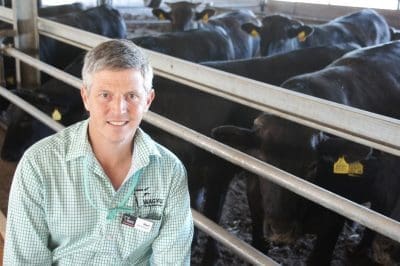
Matt McDonagh in Japanese Wagyu pens during the 2017 AWA industry tour to Japan
“Likewise, some Japanese Wagyu feeders were showing interest in reducing time on feed back to 24-26 months, as opposed to 30 months in some cases.”
But while there had been a general reduction in days-on-feed in Australian Wagyu programs, there had been significant increases in marbling abundance and consistency over the same period.
“It’s almost counter-intuitive,” Dr McDonagh said.
“The Australian industry has moved average carcase weights from around 420kg to 435kg, while reducing time on feed over the past five years. At the same time, marbling score has lifted from an average 7.6 to closer to 8.”
“It will be interesting to see how Japan has progressed over the same period. In Japan, the production focus appears to have been more towards maintaining existing carcase weights, but finishing cattle earlier – more accelerated growth to a carcase weight target, in fewer days on feed.”
“In contrast, Australia is pushing for increased marbling score and increased carcase weight, while at the same time reducing time on feed.”
Dr McDonagh said Australia was not necessarily seeking to compete with the Japanese Wagyu industry, “but it is really exciting to compare our progress with theirs,” he said.
“There is certainly a lot more appreciation and respect within the Japanese Wagyu industry over what Australia is now achieving in lifting Wagyu performance,” he said.
“In fact we think it’s great that the Japanese Wagyu industry is now highly prized in international export beef markets like the US, where it sends high quality A5 beef at incredible prices, because it lifts ‘Brand Wagyu’ for all producers around the world.”
- Beef Central’s Jon and Cath Condon are on the 2022 AWA Japan Wagyu tour, and will file reports during and after the event, including observations from tour participants.

